Before The Charger Hellcat, There Was This V8-Powered Sleeper Sedan
Back in the ’90s, the muscle car scene was making a slow comeback. Coupes were getting faster, styling was getting sharper, and horsepower was finally creeping back after years of being in hiding. But if you wanted that kind of performance with four doors and room for the family? That was a tougher find.
Then, like something from a gearhead’s fever dream, Chevrolet slipped something unexpected into showrooms. It was a full-size sedan with the soul of a street brawler. And, no, it didn’t wear racing stripes or come with a wing the size of a park bench. In fact, at first glance, you might not have noticed it at all, but under the skin was a heartbeat borrowed from one of Chevy’s most iconic sports cars, and it was about to rewrite what a family car could be.
Shoving Muscle Car DNA Into Family Sedans: Meet The ’90s King That Ruled Before The Charger Hellcat
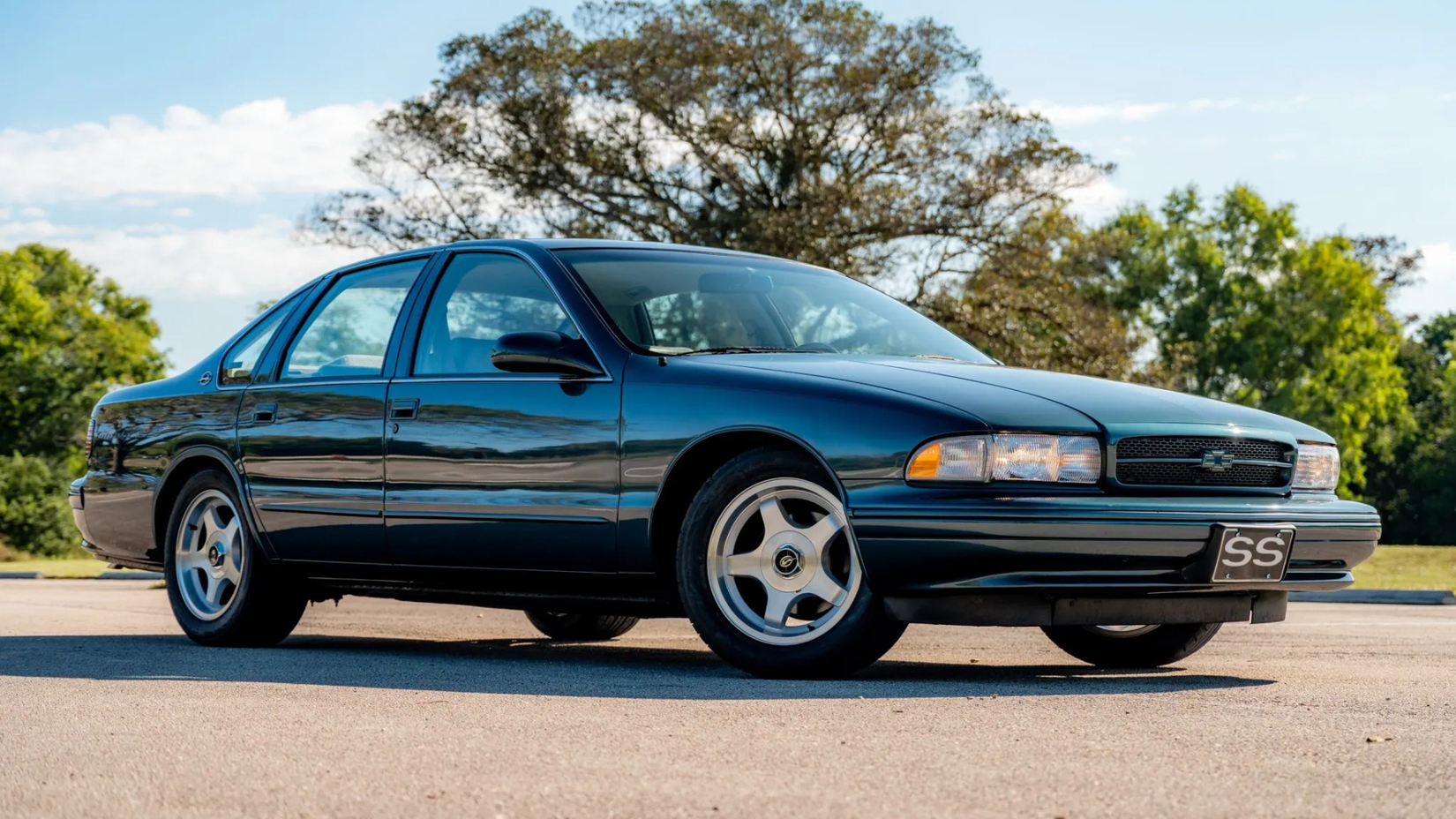
Long before Dodge stuffed a supercharged V8 into the Charger and called it a Hellcat, Chevrolet was prepping the playbook in the 1990s. However, to do the story justice, we need to jump back even a little further.
Chrysler, Pontiac, and even AMC were already padding the playbook in the ’60s and ’70s. Chrysler was one to do it early and often, starting with the Newport in the late 1960s. Chrysler began outfitting full-size sedans like the Chrysler Newport with high-performance 440 TNT V8 engines rated at 375 horsepower.
Not to be outdone, Pontiac also joined the competition. According to Over-Drive Magazine, the 1967 Catalina and Bonneville line offered the 428 and even 428 HO as options across full-size models.
AMC played the sleeper game as well. The 1969 Ambassador SST could be optioned as a four-door sedan with the 390 V8 performance engine that made 315 horsepower. AMC followed this up with a 1971 Matador four-door 401 V8 engine that was listed right in the brochure.
So, no, Chevy definitely wasn’t the first to stuff muscle car DNA into a family sedan. However, Chevy was the one that had seemingly perfected the formula in the 1990s. You see, in the early ’90s, muscle cars were starting to crawl back from the dark days of the late ’70s and ’80s, but most sedans were still tuned for comfort, not quarter-mile bragging rights. And it was Chevy that dared to change the script.
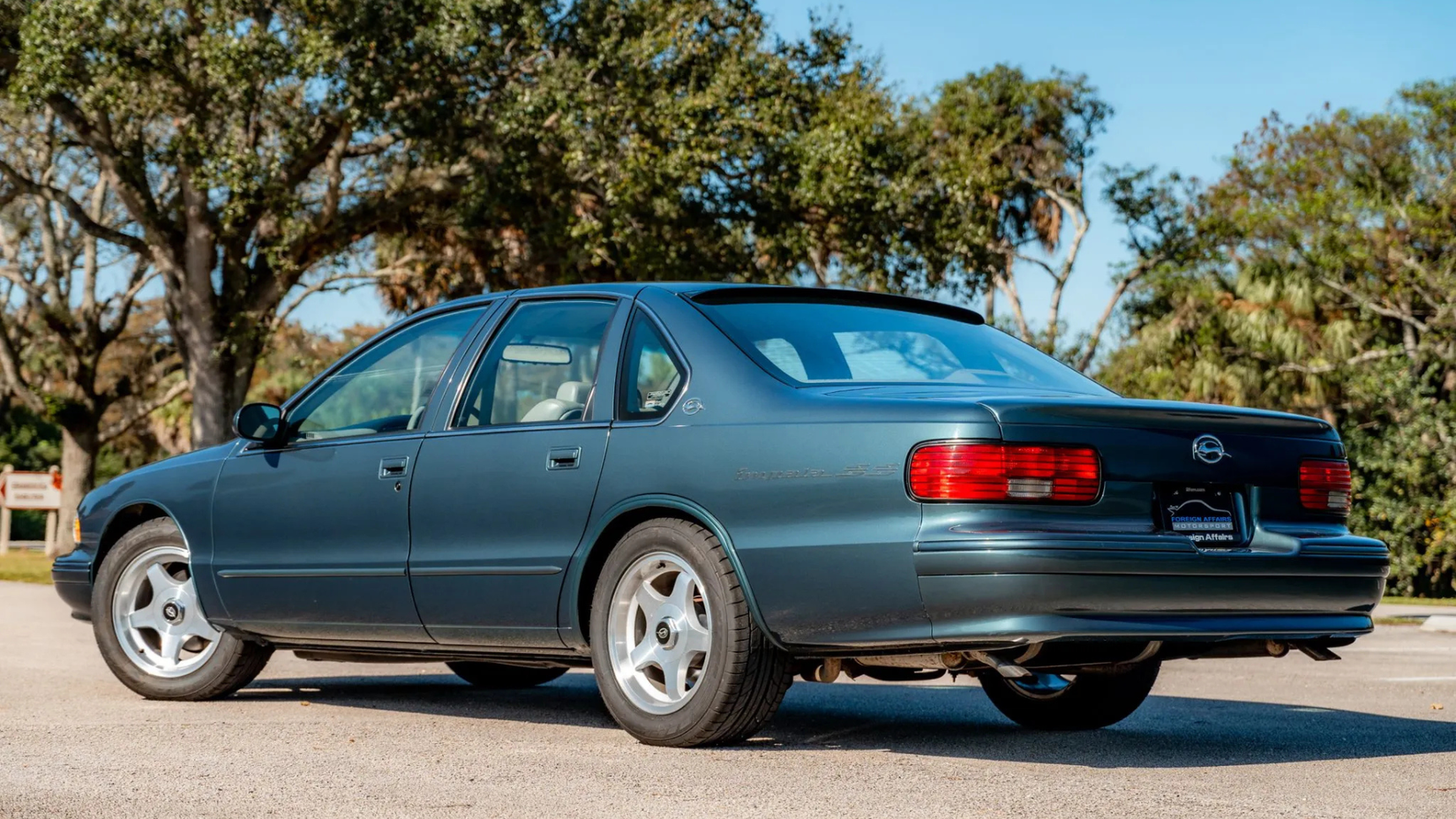
The Caprice was Chevy’s starting point. The Chevy Caprice was a full-size, rear-wheel-drive, body-on-frame sedan built on the same B-body platform as police cruisers. At the 1992 SEMA Show, GM’s Special Vehicles team, led by Jon Moss, unveileda performance-focused Caprice concept that drew an immediate crowd.
Two years later, that concept rolled into showrooms as the 1994 Impala SS. And, thus, the ’90s King of “family muscle cars” was born.
The look was pure stealth: monochrome paint, subtle badging, and a low stance that hinted at trouble. From day one, the Impala SS proved that you could blend muscle car spirit with sedan practicality. The 1994 Impala SS served as the blueprint that Dodge would supercharge decades later.
Inside The Soul Of The ’90s Sleeper Sedan That Hid A Corvette Heart
By 1994, Chevrolet rolled out a sleeper that blended full-size comfort with Corvette-born punch. However, Chevy pulled it off in a way that felt more stealth bomber than muscle car. The ’90s Impala SS wasn’t just a Caprice with attitude. It was a carefully tuned package designed to surprise.
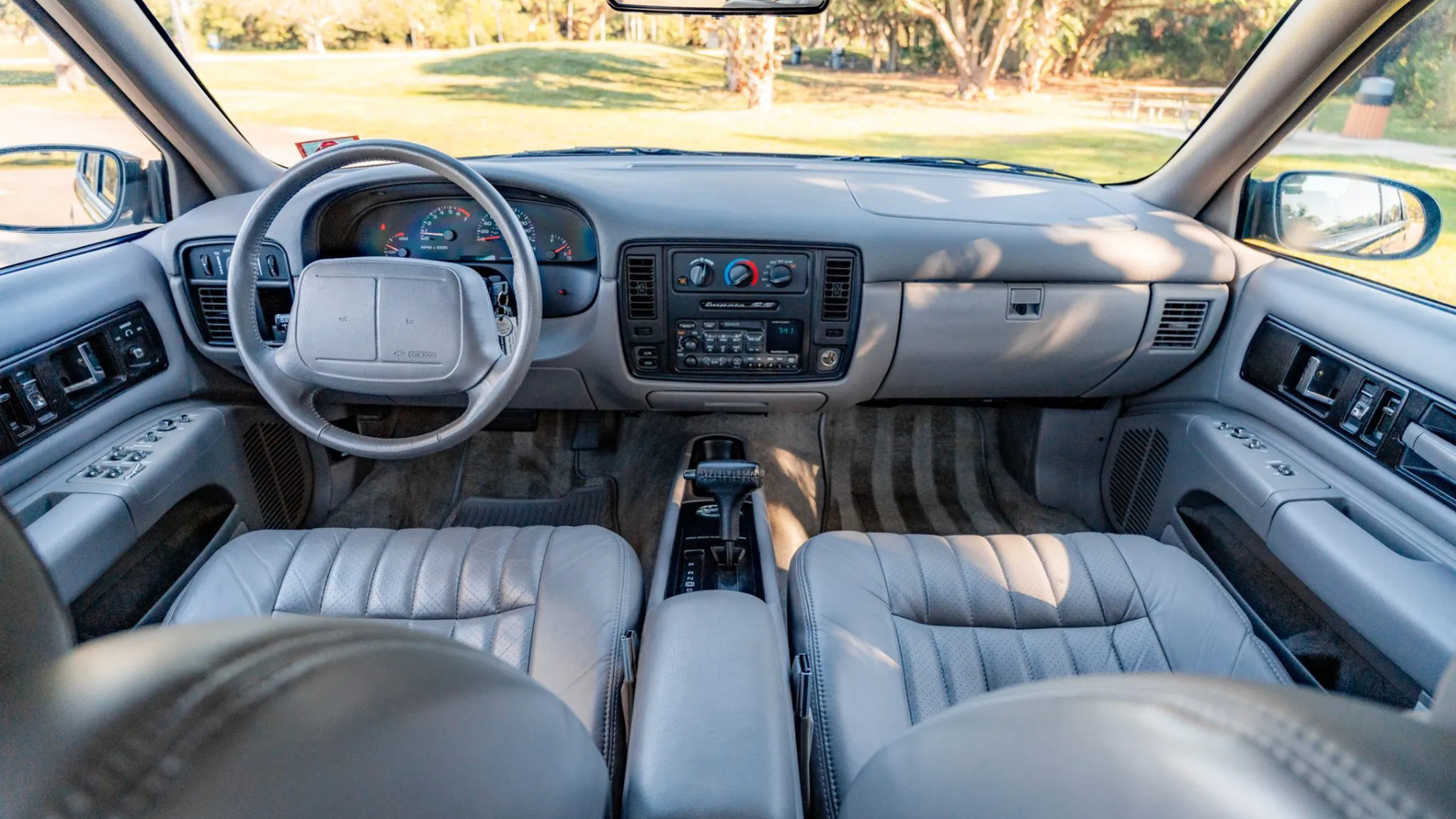
1994-1996 Impala SS Specs
| Engine | 5.7L LT1 V8 (Corvette-derived) |
| Horsepower | 260 hp |
| Torque | 330 lb-ft |
| Transmission | 4-speed automatic |
| Top Speed | ~140 mph |
| 0 to 60 mph | ~ 7 seconds |
The Impala SS was produced for three model years. According to Hemmings, a little over 6,300 were created in 1994, around 21,400 were made in 1995, and a little under 42,000 were produced in 1996.
What made the Impala SS so distinct and, yes, deserving of that “Corvette heart” tagline was its shared small-block LT1 V8 engine. Tuned for torque, the 5.7L engine delivered 260 hp and 330 lb‑ft. It was mated to a column-shifted 4L60 automatic in ’94 and ’95 models, but switched to a console shifter in the ’96 model year.
Chevy didn’t just transplant a V8 and walk away. No, they made this family sedan a full-on muscle car with a full suite of upgrades. According to HotRod, creating this family muscle car included the integration of self-leveling DeCarbon shocks, lowered suspension, four‑wheel disc brakes, beefy cooling, and 17‑inch wheels wrapped in Z‑rated rubber.
The Impala SS managed to straddle two worlds: full-size sedan comfort and brutally capable performance. It didn’t announce itself with stripes or hood scoops. Instead, it found a way to whisper fast, wearing Corvette power in plain clothes.
The 1994 Chevrolet Impala SS Is Surprisingly Affordable In 2025
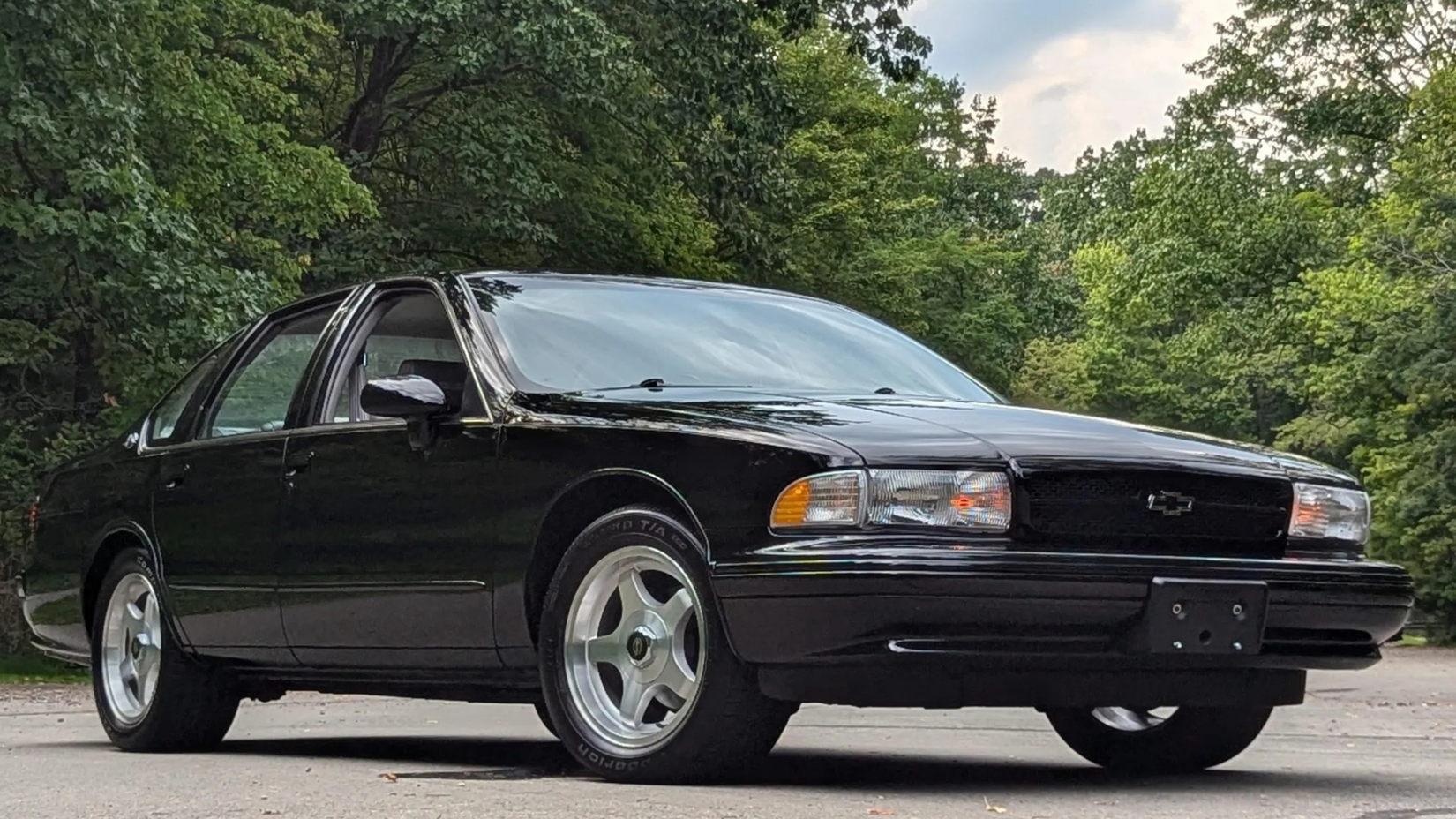
When it launched in 1994, the Impala SS had an original MSRP of approximately $22,495, according to CarGurus. This price point positioned the Impala SS just above the standard Caprice but still within reach for buyers looking for showroom muscle dressed as a family sedan.
Today, you can still get one for around the same price point you could have 30 years ago. According to Classic.com, the1994 Chevrolet Impala SS carries an average auction price of $22,856. However, the price will vary based on condition, quality, and originality. For example, Classic.com data indicates that the lowest recent auction price for a ’94 Impala SS was $10,250, while the highest going rate was $38,000.
The good news for eager gearheads is that there are still a number of 8th-generation Impala SS available on the auction block today. Just take a look atthis stunning black 1994 Chevrolet Impala SS. With just 12,217 miles on the clock, this ’94 model recently sold for just $23,250 on Bring A Trailer.
A little higher on the price spectrum, another black ’94 model recently sold for $35,200 on Mecum. However, it was in excellent condition and carried fewer than 2,000 miles on the odometer.
The 1990s Impala SS Paved The Way For The Charger Hellcat
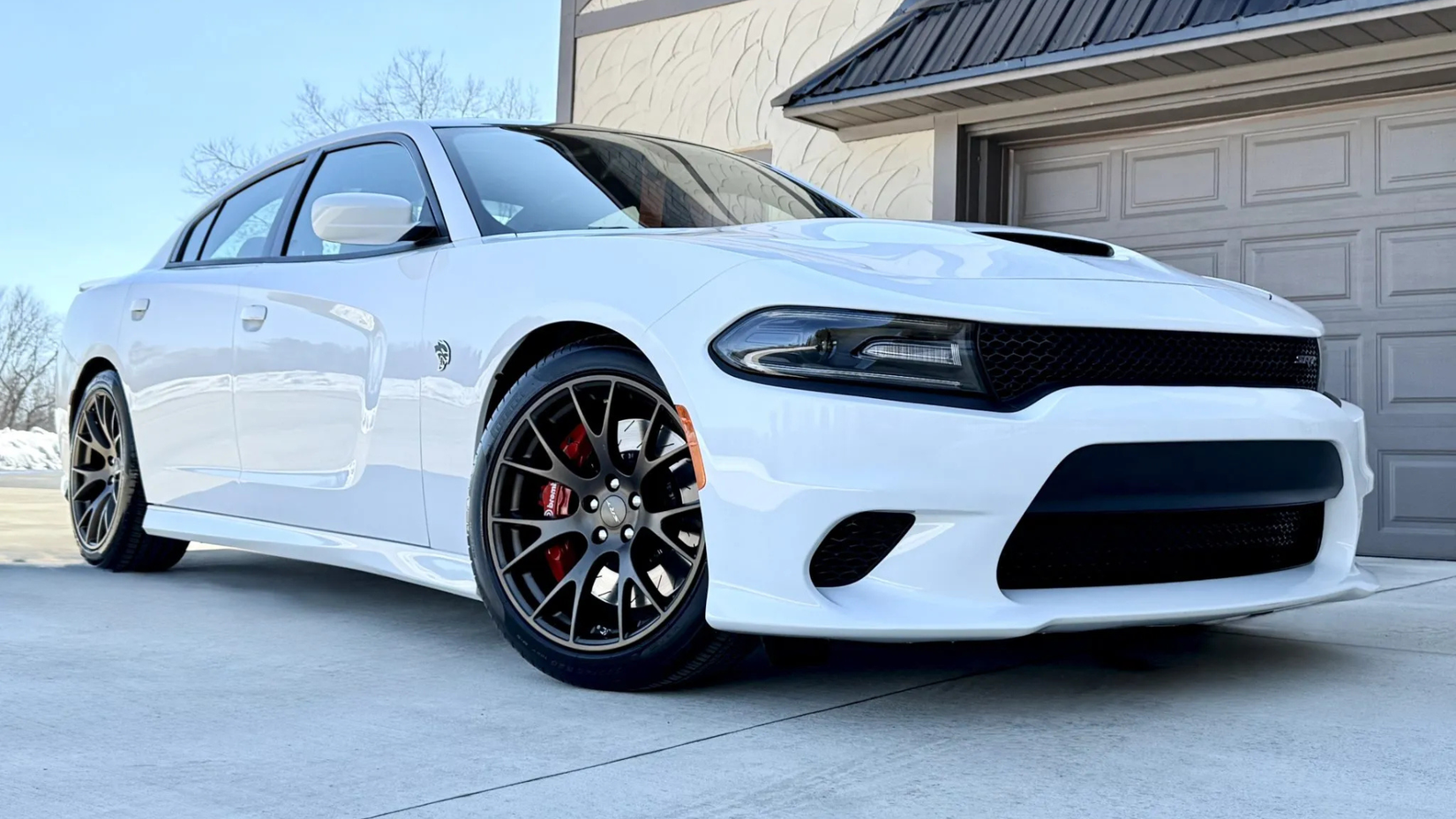
The 1990s Impala SS didn’t just give Chevrolet fans a reason to believe in muscle sedans again. No, the Impala SS laid the groundwork for what would become one of the wildest four-doors of the modern era: the Dodge Charger SRT Hellcat.
Both cars share the same basic formula:
- One: Start with a full-size sedan.
- Two: stuff in a high-output V8.
- Three: Give it the handling and brakes to back it up.
- Four: Keep the design subtle enough that it’s still street-friendly.
In the ’90s, the Impala SS’s Corvette-derived LT1 was plenty to earn respect with 260 horsepower, 330 lb-ft of torque, and a chassis tuned for real-world performance. However, fast-forward two decades, and Dodge took that muscle sedan blueprint and cranked it up to 11.
When the Dodge Charger Hellcat was introduced in 2015, it packed a 6.2-liter supercharged HEMI V8 pushing out 707 horsepower and 650 lb-ft of torque. In 2021, the Redeye variant was released, boasting an output of 797 horsepower. That’s good for 0–60 mph in about 3.5 seconds and a top speed of 203 mph. These numbers would’ve been pure fantasy in the mid-’90s.
What makes the Hellcat special isn’t just the headline horsepower. No, it’s that it delivers supercar-level speed in a package you can daily drive, just like the Impala SS did in its own era. The Hellcat may be louder, faster, and meaner, but it owes a nod to the sleeper sedan that proved big power and everyday usability could live under the same roof.
In the end, the 1994–1996 Chevrolet Impala SS was more than just a quick four-door. This sedan served as proof that muscle car spirit could thrive in a family-friendly package. It carried Corvette power under a badge that once ruled the streets, and it did it without loud stripes or outrageous aero.
Three decades later, the Dodge Charger Hellcat may have taken that idea to over-the-top extremes, but the DNA is the same: big power, real-world comfort, and an attitude that doesn’t need to shout to be heard. Whether you’re drawn to the stealthy charm of the Impala SS or the unfiltered fury of the Hellcat, both prove one thing: muscle sedans, when done right, never go out of style.
